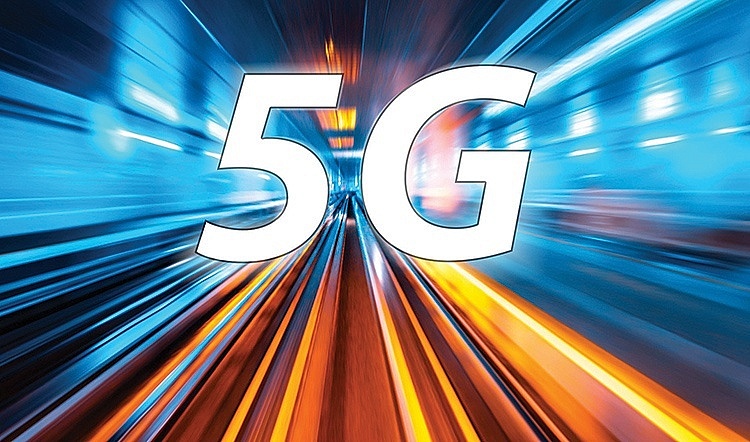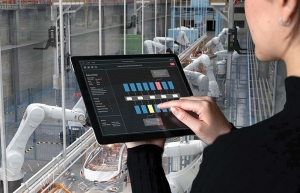Ericsson: Mobile data traffic increased almost 300-fold over 10 years
 |
| At the end of 2021, it is estimated that 5G networks will cover more than two billion people, according to the Ericsson Mobility Report |
Ericsson (NASDAQ: ERIC) global insights reveal an almost 300-fold increase in mobile data traffic since 2011, the year in which Ericsson Mobility Report was first published. The findings, based on current and historical network data, are included in the special 10-year edition of the Ericsson Mobility Report November 2021. The report looks back at some of the key trends and events that have shaped the last decade, as well as revealing the latest forecasts toward 2027.
The premise that 5G will become the fastest deployed mobile generation to date is enhanced with an updated estimate of close to 660 million 5G subscriptions by the end of this year. The increase is due to stronger-than-expected demand in China and North America, driven partly by decreasing prices of 5G devices. There was also a net addition of 98 million 5G subscriptions globally in the third quarter of 2021, compared to 48 million new 4G subscriptions. At the end of 2021, it is estimated that 5G networks will cover more than two billion people.
According to the latest forecasts, 5G is on track to become the dominant mobile access technology by subscriptions globally by 2027. By this time, 5G is expected to account for around 50 per cent of all mobile subscriptions worldwide – covering 75 per cent of the world’s population and carrying 62 per cent of the global smartphone traffic.
Since 2011, the deployment of 4G LTE networks has been pivotal in generating 5.5 billion new smartphone connections worldwide, contributing to the market availability of more than 20,000 different 4G device models. The report indicates a much earlier technology lifecycle of 5G devices, with 5G handsets today accounting for 23 per cent of global volumes, compared to 8 per cent of 4G handsets at the corresponding point in its lifecycle.
This is helping to fuel an exponential growth of mobile data traffic. Mobile network data traffic was up 42 per cent on-year in Q3/2021 at approximately 78EB, including traffic generated by Fixed Wireless Access (FWA) services. In Q3, more mobile data traffic was generated than all mobile traffic ever generated up until the end of 2016. New forecasts reveal that total mobile network data traffic is likely to reach 370EB by the end of 2027.
In Southeast Asia and Oceania, mobile subscriptions have exceeded 1.1 billion. 5G subscriptions are expected to reach close to 15 million at the end of 2021 and will grow strongly over the next few years, with a forecast total of about 560 million in 2027. Southeast Asia and Oceania will see data traffic per smartphone increasing at the fastest rate globally, reaching 46GB per month in 2027 – a CAGR of 34 per cent. Total mobile data traffic will grow accordingly, at a CAGR of 39 per cent, reaching 46EB per month, driven by continued growth in 4G subscriptions and 5G uptake in markets where 5G has been launched.
Denis Brunetti, head of Ericsson Vietnam, Myanmar, Cambodia, and Laos stated, "5G is a platform for innovation, and what makes it different from previous generations of mobile communications is that 5G will serve both consumers and enterprises. In the initial phase, 5G will enable service providers in Vietnam to provide enhanced mobile broadband experience to consumers and enhance the capacity of the networks to manage the growing data traffic. Over time, we expect new, innovative 5G use cases to emerge in the areas of 5G for business and Internet of Things use cases."
The report also reveals that the nature of mobile connections is changing rapidly, contributing to the ongoing rise in mobile data traffic. Broadband IoT has now surpassed 2G/3G as the segment that connects the largest share of IoT applications. It is expected to account for 47 per cent of all cellular IoT connections by the end of 2021, compared to 37 per cent for 2G/3G and 16 per cent for Massive IoT technologies (NB-IoT and Cat-M).
New forecasts reaffirm the rapid acceleration of massive IoT deployments in the coming years, spanning use cases such as e-health wearables, logistical asset tracking, environmental monitoring and smart metres, and smart manufacturing tracking and monitoring devices. Massive IoT deployments are forecast to account for 51 per cent of all cellular IoT connections by 2027
In the same forecast period, FWA connections are forecast to grow almost threefold – from 88 million by the end of 2021 to around 230 million in 2027. Almost half of these connections are expected to be carried over 5G networks.
What the stars mean:
★ Poor ★ ★ Promising ★★★ Good ★★★★ Very good ★★★★★ Exceptional
Themes: Digital Transformation
Related Contents
Latest News
More News
- Global partnerships key to Vietnam’s IFC development (December 26, 2025 | 16:18)
- Vingroup pulls out of bid to invest in North-South high-speed railway (December 26, 2025 | 11:42)
- Strengthening supply chains through trade promotions and customs reform (December 24, 2025 | 14:00)
- PM orders investment model for North–South high-speed rail (December 22, 2025 | 17:43)
- LS Eco Energy to invest in Vietnam rare earth sector (December 22, 2025 | 17:31)
- Government moves to establish International Financial Centre (December 21, 2025 | 21:00)
- Vietnam's IFC to target global investment flows (December 21, 2025 | 18:00)
- Two national hospitals expand capacity with new facilities (December 20, 2025 | 09:00)
- Ha Tinh breaks ground on major Vingroup industrial and energy projects (December 19, 2025 | 18:24)
- EVN launches major power infrastructure projects nationwide (December 19, 2025 | 18:17)





 Tag:
Tag:
























 Mobile Version
Mobile Version